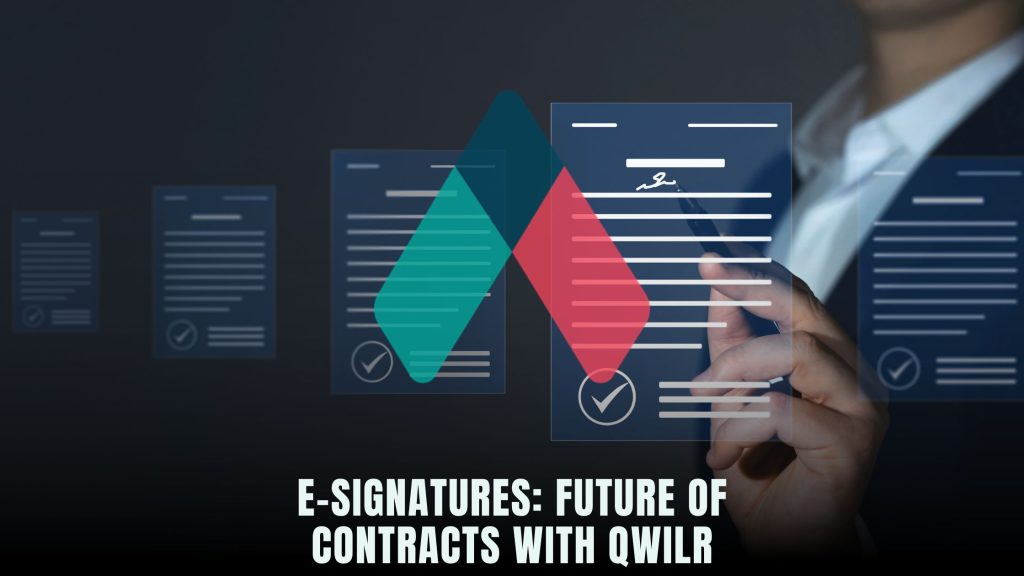Uncovering Buyer Intent: Using Qwilr Analytics to Win More Deals
- Data as a Service (DaaS) Software Marketing & Analytics

Understanding buyer intent is crucial for converting prospects into loyal customers. Analytics play a pivotal role in deciphering the behaviors and preferences of potential clients, enabling sales teams to tailor their strategies effectively. Qwilr offers powerful analytics features that provide deep insights into how prospects interact with proposals. This article explores how Qwilr’s analytics tools help sales teams uncover buyer intent, implement data-driven strategies, and ultimately win more deals faster.
The Importance of Understanding Buyer Intent
Decoding Customer Behavior
Understanding buyer intent involves analyzing how prospects engage with your sales materials, what elements capture their attention, and what actions they take. By decoding these behaviors, businesses can gain valuable insights into the needs and motivations of their potential customers. Qwilr’s analytics tools track every interaction a prospect has with a proposal, providing detailed data on which sections they spend the most time on, which links they click, and how they navigate through the document. This information is invaluable for refining sales pitches and tailoring follow-up strategies to align with the prospect’s interests.
Enhancing Personalization in Sales
Personalization is a key driver of successful sales strategies. When sales teams understand the specific needs and preferences of their prospects, they can customize their proposals to address those requirements directly. Qwilr’s analytics enable this level of personalization by offering insights into which parts of the proposal resonate most with the prospect. For instance, if analytics reveal that a prospect spends a significant amount of time on the pricing section, the sales team can focus on providing more detailed information or additional incentives in that area. This targeted approach increases the likelihood of closing deals by making proposals more relevant and compelling.
Leveraging Qwilr’s Analytics Features
Real-Time Engagement Tracking
One of the standout features of Qwilr is its real-time engagement tracking. Sales teams can monitor how prospects interact with their proposals in real-time, allowing for timely and informed follow-ups. This immediate feedback loop helps sales representatives understand the prospect’s level of interest and identify any potential obstacles early in the sales process. By addressing concerns or providing additional information promptly, businesses can accelerate the decision-making process and move closer to closing the deal.
Comprehensive Sales Insights
Qwilr’s analytics provide comprehensive sales insights that go beyond basic engagement metrics. The platform offers detailed reports on various aspects of the proposal, such as view counts, time spent on each section, and conversion rates. These insights help sales teams identify patterns and trends in prospect behavior, enabling them to optimize their proposals for better performance. For example, if data shows that prospects frequently abandon proposals at a specific section, sales teams can investigate and improve that part of the document to enhance its effectiveness.
Integration with CRM Systems
To maximize the value of the analytics data, Qwilr seamlessly integrates with popular CRM systems like Salesforce, HubSpot, and Zoho. This integration ensures that all engagement data is automatically synchronized with the CRM, providing a unified view of each prospect’s journey. Sales teams can leverage this integrated data to gain a holistic understanding of customer interactions, streamline their workflows, and make more informed decisions based on comprehensive insights.
Benefits of Using Qwilr Analytics
Data-Driven Decision Making
Qwilr’s analytics empower sales teams to make data-driven decisions by providing actionable insights into prospect behavior. Instead of relying on guesswork or anecdotal evidence, businesses can use concrete data to refine their sales strategies and improve their proposals. This shift towards data-driven decision making enhances the effectiveness of sales efforts, leading to higher conversion rates and increased revenue.
Faster Deal Closures
By uncovering buyer intent and understanding how prospects interact with proposals, Qwilr helps sales teams address objections and provide the right information at the right time. This proactive approach accelerates the sales cycle, enabling businesses to close deals faster. The ability to respond swiftly to prospect needs and preferences reduces the time spent on negotiations and follow-ups, making the entire sales process more efficient.
Enhanced Customer Relationships
Understanding buyer intent fosters stronger customer relationships by demonstrating a genuine interest in meeting the prospect’s needs. Qwilr’s analytics enable sales teams to engage with prospects in a more meaningful way, addressing their specific concerns and providing tailored solutions. This personalized interaction builds trust and rapport, increasing the likelihood of long-term customer loyalty and repeat business.
Implementing Qwilr’s Analytics for Maximum Impact
Setting Up Analytics Tracking
To fully leverage Qwilr’s analytics features, businesses need to set up tracking correctly. This involves embedding tracking codes within proposals and ensuring that all interactions are accurately recorded. Qwilr provides easy-to-follow guides and support to help users configure their analytics settings effectively. Proper setup ensures that sales teams have access to accurate and comprehensive data, which is essential for making informed decisions.
Analyzing Engagement Data
Once analytics tracking is in place, the next step is to analyze the engagement data regularly. Sales teams should review reports to identify trends and patterns in prospect behavior. Key metrics to focus on include view duration, click-through rates, and conversion rates. By analyzing these metrics, businesses can identify which parts of their proposals are performing well and which areas need improvement. This ongoing analysis allows for continuous optimization of sales materials to better meet prospect needs.
Refining Sales Strategies
The insights gained from Qwilr’s analytics should be used to refine and enhance sales strategies. For example, if data shows that prospects are highly engaged with product features but lose interest during the pricing section, sales teams can adjust their proposals to highlight value propositions more effectively or offer flexible pricing options. By continuously refining strategies based on data insights, businesses can improve their proposal effectiveness and increase their chances of closing deals.
Training Sales Teams
To maximize the benefits of Qwilr’s analytics, it’s essential to train sales teams on how to interpret and utilize the data. Training sessions can focus on understanding key metrics, using insights to tailor proposals, and implementing data-driven follow-up strategies. Empowering sales teams with the knowledge and skills to leverage analytics ensures that they can make the most of Qwilr’s capabilities and drive better sales outcomes.
Advanced Strategies for Leveraging Qwilr Analytics
Segmenting Prospects Based on Engagement
Qwilr’s analytics allow businesses to segment their prospects based on their engagement levels and behaviors. By categorizing prospects into different segments, such as highly engaged, moderately engaged, or low engagement, sales teams can tailor their follow-up strategies accordingly. For highly engaged prospects, more personalized and immediate follow-ups can be implemented to accelerate deal closures. For those with lower engagement, additional nurturing efforts can be deployed to re-engage and move them further down the sales funnel.
Utilizing Predictive Analytics for Sales Forecasting
Beyond tracking current engagement, Qwilr’s analytics can be leveraged for predictive analytics. By analyzing historical data and engagement patterns, sales teams can forecast future sales trends and identify potential high-value prospects. Predictive insights enable businesses to allocate resources more effectively, prioritize high-potential leads, and strategize for upcoming sales opportunities with greater confidence.
Integrating Qwilr Analytics with Marketing Automation
Integrating Qwilr’s analytics with marketing automation tools can create a seamless flow of information between sales and marketing teams. Marketing campaigns can be tailored based on the engagement data from Qwilr, ensuring that marketing efforts are aligned with sales strategies. For instance, if analytics reveal that a particular marketing campaign is driving high engagement with proposals, similar strategies can be replicated to maintain momentum and maximize results.
Leveraging A/B Testing for Proposal Optimization
A/B testing is a powerful method for optimizing proposals based on data-driven insights. Qwilr’s analytics enable businesses to conduct A/B tests on different proposal elements, such as layout, content, or call-to-action buttons. By analyzing the performance of each variant, sales teams can identify the most effective elements and incorporate them into future proposals. This iterative approach ensures continuous improvement and maximizes the effectiveness of sales materials.
Relevant SaaS Products to Enhance Your Analytics Workflow
Integrating additional SaaS tools can complement Qwilr’s analytics capabilities, further streamlining your workflow and boosting productivity. Here are some relevant tools to consider:
- Google Analytics: A powerful tool for tracking website traffic and user behavior, providing deeper insights into how prospects interact with your online content.
- Hotjar: Offers heatmaps and behavior analytics to visualize how users engage with your proposals and identify areas for improvement.
- HubSpot: A comprehensive CRM and marketing platform that integrates seamlessly with Qwilr, enhancing your ability to track and analyze sales interactions.
- Salesforce: A leading CRM system that provides extensive analytics and reporting features to complement Qwilr’s data-driven insights.
- Tableau: A data visualization tool that helps you create detailed and interactive dashboards, making it easier to interpret Qwilr’s analytics data.
- Intercom: A customer messaging platform that integrates with Qwilr to provide real-time communication insights alongside proposal engagement data.
- Mailchimp: An email marketing platform that allows you to track the effectiveness of email campaigns in conjunction with Qwilr’s proposal analytics.
- Zapier: An automation tool that connects Qwilr with thousands of other apps, enabling seamless data transfer and workflow automation.
- Segment: A customer data platform that consolidates data from multiple sources, enhancing the depth and accuracy of insights derived from Qwilr’s analytics.
- Looker: A business intelligence tool that integrates with Qwilr to provide advanced data analysis and reporting capabilities.
Discover More with Subscribed.FYI
Managing a comprehensive suite of SaaS tools can be overwhelming, especially when aiming to maintain an efficient workflow. This is where Subscribed.FYI comes into play. As you harness the power of Qwilr’s analytics features to uncover buyer intent and drive data-driven sales strategies, managing and optimizing your SaaS stack becomes essential. Subscribed.FYI serves as the all-in-one solution for freelancers and small teams, offering centralized information about various tools that can enhance your productivity and efficiency.
Whether you’re looking to compare different analytics tools, find the best deals on platforms like Qwilr, or manage your subscriptions seamlessly, Subscribed.FYI empowers you to make informed decisions. Unlock secret deals, save on SaaS expenses, and manage all your subscriptions in one place with ease. By integrating Subscribed.FYI into your workflow, you ensure that your toolkit is optimized for productivity and cost-effectiveness, allowing you to focus on what truly matters: turning data into deals and driving your business forward.
Conclusion
Analytics are invaluable for understanding and responding to buyer intent. Qwilr provides robust analytics features that enable sales teams to track and analyze how prospects interact with proposals. By leveraging these insights, businesses can implement data-driven strategies that enhance personalization, accelerate decision-making, and ultimately win more deals faster.
Qwilr’s analytics tools offer a comprehensive view of prospect engagement, allowing sales teams to refine their proposals and follow-up strategies effectively. The integration with popular CRM systems ensures that all data is synchronized and actionable, fostering a seamless and efficient sales process. As businesses continue to seek ways to optimize their sales workflows, embracing analytics-driven solutions like Qwilr is essential for achieving sustained growth and success.
Investing in Qwilr’s analytics capabilities empowers your sales team to make informed decisions, tailor their approaches to meet prospect needs, and drive higher conversion rates. By turning data into actionable insights, Qwilr not only streamlines the sales process but also enhances the overall effectiveness of your sales strategies, ensuring that your business remains competitive and forward-thinking in today’s data-driven market.
Relevant Links
Below are the direct links mentioned throughout the article. All links open in a new tab for a seamless browsing experience:
- Qwilr: Main Page | Deals
- Proposal Software: Explore Tools
- Subscribed.FYI: Homepage | Deals
- Google Analytics: Official Website
- Hotjar: Official Website
- HubSpot: Official Website
- Salesforce: Official Website
- Tableau: Official Website
- Intercom: Official Website
- Mailchimp: Official Website
- Zapier: Official Website
- Segment: Official Website
- Looker: Official Website






